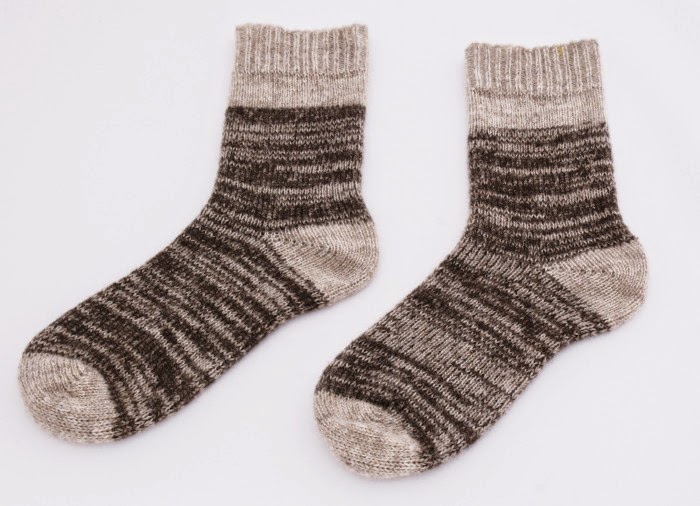I've been knitting more double strand socks with my Shetland 70/30 Wool/Nylon 1 ply lace weight.
To feed my yarn I drilled a few holes in one of the wood boxes I use at my market stall, so I could place one cone under another, and feed the yarn from the lower cone up and through the center of the upper cone. In the photo you can see I've got two cones of fawn on the left that I use of the topper, heels, and toes, and on the right a cone of moorit feeding up through a cone of fawn for a blended colour on the body of the leg and foot.
The set up shown is with my Legare 400, 54 cylinder, knitting size Small. The yellow yarn on the knitter (and in the garbage) is my scrap yarn.
To begin I've done a reverse e-wrap selvedge, and have just begun lowering the needles into work position to knit the selvedge round.
Then I put on the ribber and swap every other stitch from a cylinder needle to a ribber needle to knit the 1 x 1 cuff.
With the ribbed cuff complete I knit some more rows in the double stranded fawn before switching over to the fawn-moorit combination. Below I have just made the join in the yarn change and am just beginning to knit the first row.
WIth the two tone leg completed I break the yarn to splice on the double-fawn for the heel.
With the heel complete I go back to the two tone for the foot, then back to the double fawn for the toe.
Toes closed, scrap removed, socks washed and blocked:








I really like your stand. Did you make it yourself?
ReplyDeleteNo - its a shop stand for a grinding machine - I bought at Canadian Tire. It's very sturdy...and also very heavy!
DeleteGreat looking socks!
ReplyDelete
ReplyDeleteI am impressed, a sock machine. I have been looking for one as I would like to knit with a sock machine.